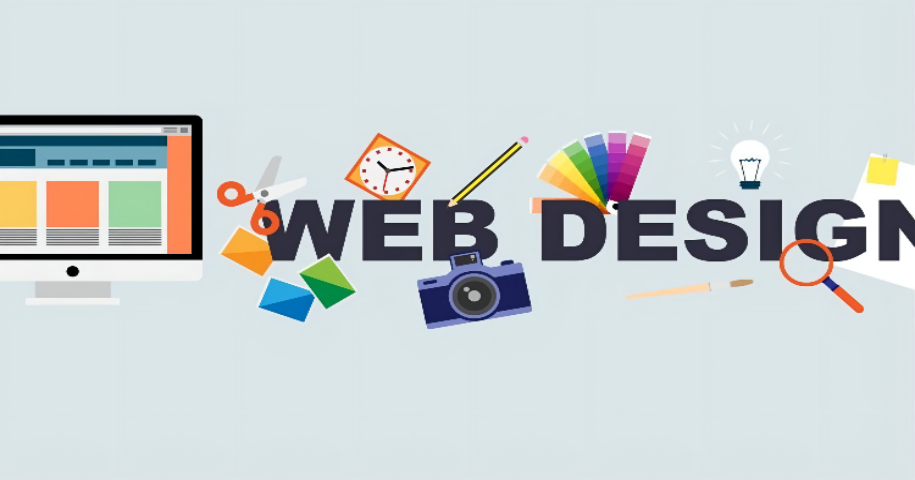The Role of Responsive Web Design in Reaching a Broader Audience
The Role of Responsive Web Design in Reaching a Broader Audience
Blog Article
How Efficient Web Design Can Boost Customer Experience and Conversions
In the progressively affordable digital landscape, effective internet layout plays a crucial role in improving customer experience and driving conversions. By focusing on user-centric principles, such as clear web content power structures and instinctive navigation, organizations can create interesting systems that not just attract site visitors but likewise help with seamless interactions. As we check out the crucial elements that contribute to effective internet layout, it comes to be noticeable that the influence on customer contentment and conversion rates is profound. Understanding these characteristics may uncover approaches that might change just how individuals engage with your site.
Importance of User-Centric Style
In the realm of web design, focusing on user-centric design is vital for producing reliable electronic experiences. This method focuses on understanding the needs, choices, and habits of users, ensuring that electronic interfaces are accessible and instinctive (Web design). By integrating individual responses into the design procedure, internet designers can craft experiences that resonate with their target market, inevitably bring about raised involvement and contentment
User-centric design stresses functionality, which is important for lessening and retaining customers bounce rates. When individuals can browse a site easily, they are much more most likely to explore its content and transform right into customers.

Key Aspects of Effective Design
Effective layout acts as the backbone of user-centric web design, equating user requires right into aesthetic frameworks that help with interaction. An efficient design prioritizes web content via a clear pecking order, leading users' eyes to vital information first. This hierarchy is often established utilizing shade, size, and spacing, guaranteeing that vital aspects stand apart.
An additional crucial element is using whitespace, which protects against congestion and boosts readability. Web design. Whitespace enables elements to breathe, making the general layout show up cleaner and simpler to navigate. Additionally, consistency in design aspects, such as font styles and colors, promotes experience and count on, making it possible for individuals to navigate the site with higher ease
Grid systems can additionally be invaluable, providing a framework that straightens material logically and visually. This alignment improves the individual experience by developing an organized visual flow. Furthermore, versatility in layout-- like receptive layout-- ensures that web sites perform well throughout numerous tools, dealing with varied customer preferences.
Inevitably, an effective format not just astounds individuals yet also motivates them to engage even more deeply, inevitably driving conversions and fulfilling company goals. By concentrating on these vital aspects, developers can create formats that reverberate with users and improve their overall experience.
Navigational Finest Practices
Clear and intuitive navigation visit is vital for boosting individual experience on a website. A well-structured navigating system enables customers to discover details promptly, which straight influences their fulfillment and possibility of conversion - Web design. Carrying out a hierarchical framework is important; make use of groups and subcategories that rationally group related material, making it easier for site visitors to discover
Make sure that links, menus, and switches maintain harmony in style, shade, and positioning throughout all web pages, offering individuals with an acquainted structure as they browse. Rather of generic terms, choose for clear tags that accurately mirror the material, aiding users in making educated decisions.

Mobile Responsiveness and Ease Of Access

Accessibility, on the various other hand, concentrates on making websites useful for individuals with disabilities. This consists of adhering to guidelines such as the Internet Content Availability Guidelines (WCAG), which resolve problems like shade comparison, text size, and keyboard navigating. By carrying out these requirements, web designers can create comprehensive experiences that provide to a more comprehensive audience, thereby improving customer engagement and fulfillment.
Furthermore, mobile responsiveness and availability not only enhance individual experience however likewise positively influence internet search engine positions. Online search engine prioritize obtainable and mobile-friendly web sites, making them most likely to appear in pertinent search engine result. Subsequently, investing in these elements of internet design not just fulfills customer requirements however additionally adds to overall service success with increased exposure and improved conversion prices.
Gauging Success Through Analytics
Tracking customer interactions and actions with analytics is vital for assessing the success of an internet site. By leveraging devices such as Google Analytics, businesses can collect important information that exposes just how view publisher site individuals engage with their website. Metrics such as bounce rates, ordinary session duration, and conversion prices give insights right into user behavior and can highlight areas for enhancement.
Recognizing user demographics and traffic resources better enhances a website's performance. This information enables web developers to customize content and style aspects to better fulfill the demands of their target audience. In addition, tracking particular individual journeys assists identify prospective bottlenecks in the conversion funnel, enabling companies to maximize their web layout accordingly.
A/B testing different design elements can supply concrete proof of what resonates with individuals, permitting for educated decisions based on real-world performance. Inevitably, measuring success via analytics not only enhances user experience however additionally drives conversions, making certain that internet style initiatives straighten with company goals.
Verdict
In verdict, efficient web layout plays a crucial function in boosting user experience and driving conversions. Eventually, gauging success through analytics enables for continuous improvement, ensuring that style approaches continue to be lined up with customer demands, thus fostering company development and success.
In the significantly competitive digital landscape, effective internet style plays a critical function in enhancing user experience and driving go to website conversions. By integrating individual responses into the layout procedure, web designers can craft experiences that resonate with their target audience, inevitably leading to enhanced involvement and fulfillment.
Eventually, the significance of user-centric style lies in its capacity to create meaningful interactions that drive conversions and foster long-lasting partnerships with customers, making it an indispensable component of successful internet layout techniques.
Ultimately, gauging success through analytics not only enhances user experience but additionally drives conversions, guaranteeing that web layout efforts straighten with organization purposes.In verdict, effective web design plays a crucial role in improving user experience and driving conversions.
Report this page